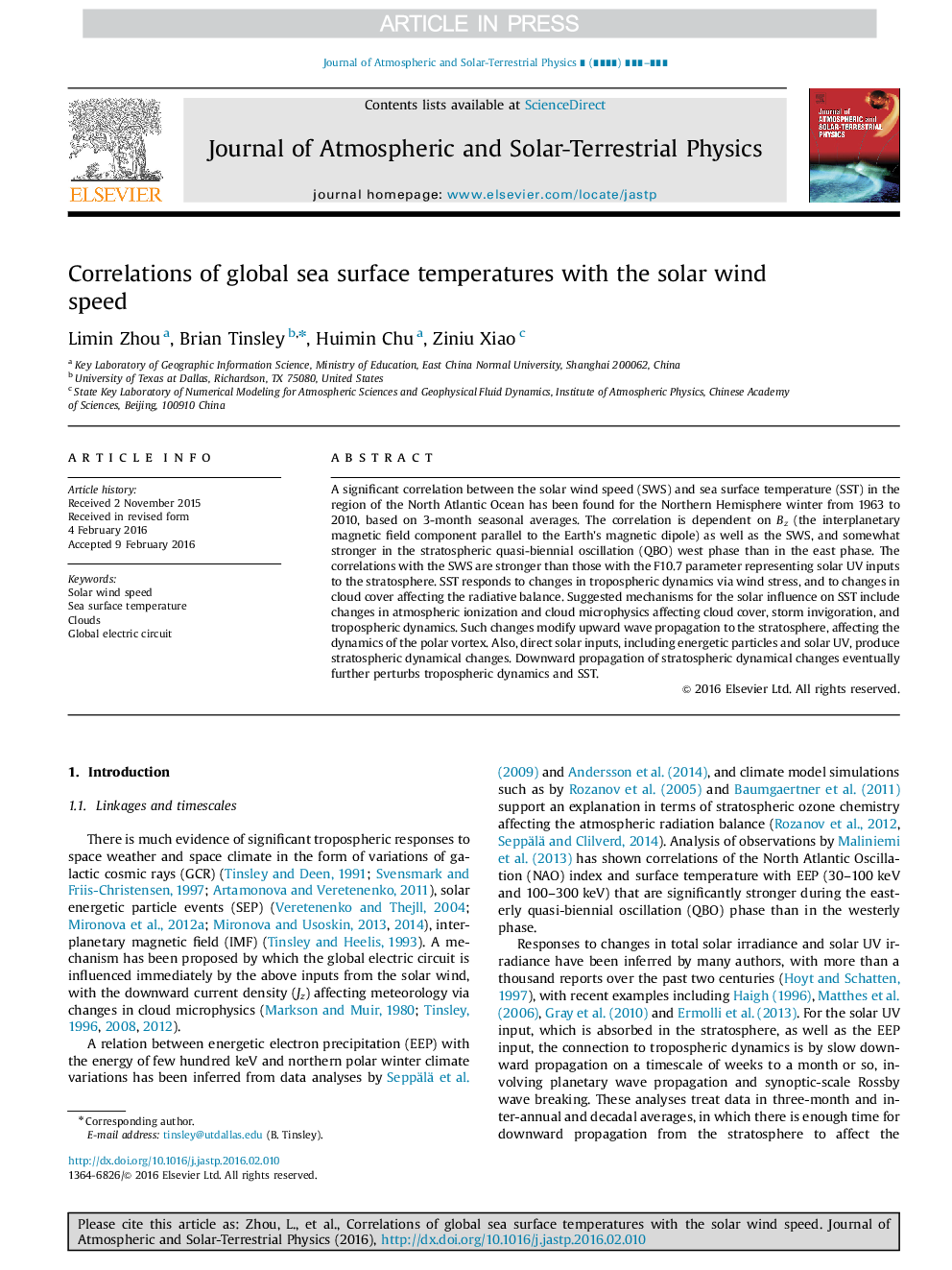| Article ID | Journal | Published Year | Pages | File Type |
|---|---|---|---|---|
| 5487686 | Journal of Atmospheric and Solar-Terrestrial Physics | 2016 | 8 Pages |
Abstract
A significant correlation between the solar wind speed (SWS) and sea surface temperature (SST) in the region of the North Atlantic Ocean has been found for the Northern Hemisphere winter from 1963 to 2010, based on 3-month seasonal averages. The correlation is dependent on Bz (the interplanetary magnetic field component parallel to the Earth's magnetic dipole) as well as the SWS, and somewhat stronger in the stratospheric quasi-biennial oscillation (QBO) west phase than in the east phase. The correlations with the SWS are stronger than those with the F10.7 parameter representing solar UV inputs to the stratosphere. SST responds to changes in tropospheric dynamics via wind stress, and to changes in cloud cover affecting the radiative balance. Suggested mechanisms for the solar influence on SST include changes in atmospheric ionization and cloud microphysics affecting cloud cover, storm invigoration, and tropospheric dynamics. Such changes modify upward wave propagation to the stratosphere, affecting the dynamics of the polar vortex. Also, direct solar inputs, including energetic particles and solar UV, produce stratospheric dynamical changes. Downward propagation of stratospheric dynamical changes eventually further perturbs tropospheric dynamics and SST.
Related Topics
Physical Sciences and Engineering
Earth and Planetary Sciences
Geophysics
Authors
Limin Zhou, Brian Tinsley, Huimin Chu, Ziniu Xiao,
